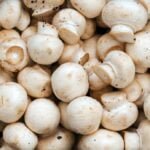Can you provide more information about the heat-tolerant mushroom species?
Title: Cultivating Heat-Tolerant Mushroom Species for Warm Climates
Introduction:
In the world of mushroom cultivation, heat-tolerant species supply thrilling alternatives for farmers and fans in heat climates. These specialised mushrooms can face up to greater temperatures, making them ultimate for areas with tropical or scorching climate circumstances. In this blog submit, we are going to discover a wide range of heat-tolerant mushroom species and their cultivation potential. From tiger saw-gill to large macrocybe, we’ll delve into the distinctive traits of those mushrooms and focus on tips on how to domesticate them efficiently.
1. Tiger Saw-gill (Lentinus tigrinus):
Tiger saw-gill is a heat-tolerant mushroom recognized for its hanging look and nutty taste. It thrives in temperatures starting from 80°F to 100°F (27°C to 38°C). Cultivating tiger saw-gill requires a substrate wealthy in lignin, similar to sawdust or wooden chips. These mushrooms might be grown by spawn inoculation and cautious temperature regulation.
2. Turkey Tail (Trametes versicolor):
Renowned for its medicinal properties, turkey tail is a heat-tolerant mushroom usually present in the wild. It grows in a wide range of environments, together with tropical areas. Turkey tail cultivation sometimes includes utilizing hardwood logs as the substrate, though different strategies like bag cultivation will also be employed. With correct moisture and temperature management, profitable cultivation is feasible even in heat climates.
3. Wood Ear (Auricularia spp.):
Wood ear mushrooms, often known as jelly ear, are in style elements in Asian delicacies. These heat-tolerant mushrooms choose heat and humid circumstances. Cultivation strategies for wooden ear mushrooms embody indoor cultivation utilizing sterile substrates or outside cultivation on decomposing tree logs. They can face up to temperatures of as much as 95°F (35°C), making them appropriate for heat climates.
4. Hairy Panus (Panus rudis):
Hairy panus mushrooms are heat-tolerant and generally present in tropical areas. They have a definite furry look, therefore their identify. Cultivating furry panus mushrooms requires a heat, humid setting and a substrate wealthy in lignocellulosic supplies. These mushrooms can tolerate temperatures as much as 100°F (38°C), making them a promising choice for heat local weather cultivators.
5. Oysters (Pleurotus spp.):
Oysters are a well-liked alternative amongst mushroom cultivators worldwide, and tropical ecotypes of oyster mushrooms are particularly tailored to greater temperatures. These heat-tolerant mushrooms choose temperatures between 75°F and 86°F (24°C and 30°C). Cultivation strategies for oysters can embody straw-based substrates, supplemented sawdust blocks, and even using agricultural waste supplies.
6. Reishi (Ganoderma lucidum):
Reishi mushrooms have an extended historical past of use in conventional medication and are famend for his or her immune-boosting properties. While they are often grown in a variety of climates, some tropical ecotypes have tailored to greater temperatures. Reishi cultivation sometimes includes utilizing hardwood logs as the substrate or using specialised kits. Adequate shade and moisture management are very important for profitable cultivation.
7. Scaly Lentinus (Lentinus squarrosulus):
Scaly lentinus mushrooms are characterised by their scaly caps and are well-suited for tropical climates. They thrive in temperatures starting from 77°F to 100°F (25°C to 38°C). Cultivating scaly lentinus mushrooms requires a substrate wealthy in lignocellulosic supplies, similar to sawdust or wooden chips.
8. Shiitake (Lentinula edodes):
Shiitake mushrooms have gained recognition worldwide on account of their culinary enchantment and well being advantages. Tropical ecotypes of shiitake have been developed to face up to greater temperatures. Cultivating shiitake mushrooms includes inoculating hardwood logs or supplemented sawdust blocks and offering managed circumstances to make sure profitable fruiting.
9. King Stropharia (Stropharia rugosoannulata):
King stropharia, often known as wine cap, is an adaptable mushroom that may tolerate a variety of temperatures. It thrives in temperatures between 60°F and 95°F (16°C and 35°C). Cultivation strategies for king stropharia embody outside cultivation on wooden chips or backyard beds, making it appropriate for heat local weather cultivation.
10. Giant Milky (Calocybe indica):
Giant milky mushrooms have a powerful dimension and are extremely valued for his or her culinary makes use of. They are heat-tolerant and may face up to temperatures as much as 104°F (40°C). Cultivating big milky mushrooms requires sterilized substrates like composted straw and correct temperature management.
11. Paddy Straw (Volvariella spp.):
Paddy straw mushrooms are generally cultivated in lots of Asian international locations, together with these with heat climates. They thrive in temperatures between 77°F and 95°F (25°C and 35°C), making them ultimate for tropical areas. Straw-based substrates and correct humidity administration are important for profitable cultivation.
12. Giant Macrocybe (Macrocybe crassa):
Giant macrocybe mushrooms are native to tropical and subtropical areas and may tolerate excessive temperatures. They develop properly in temperatures starting from 75°F to 104°F (24°C to 40°C). Cultivating big macrocybe mushrooms sometimes includes using agricultural residues or composted substrates in a managed setting.
Conclusion:
Cultivating heat-tolerant mushroom species opens up thrilling potentialities for mushroom fans and farmers in heat climates. From tiger saw-gill to large macrocybe, every of those mushrooms has distinct traits that make them appropriate for cultivation in greater temperatures. By understanding their particular necessities and following acceptable cultivation methods, it’s doable to get pleasure from a bountiful harvest of scrumptious and nutritious mushrooms in even the warmest of climates.




